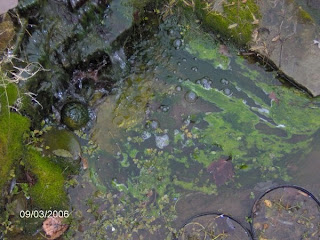What is Phosphate?
By Clifford WoodsPhosphates, which contain phosphorus, are essential nutrients that contribute to the growth and metabolic reactions of all animals and plants. The quantity of phosphorus can either increase or limit growth. Since it is essential to the growth of plants and animals, an imbalance in the amount of the natural growth of phosphorus can produce harmful changes to the environment. This is when it becomes a job for a phosphate remover to handle.
Contributing Factors In Phosphates Overgrowth: the internal contributor in the growth of the presence of phosphates in your fish pond is from the mineralization of dead matter, such as plants, uneaten food, feces, fish slime, bacteria, etc. The rotting food particles or dead plant materials settle either within the filter or on the substrate. You should vacuum the gravel or rinsing filter materials every time you change the water in your pond or tank will substantially decrease the potential accumulation of phosphate deposits. The probable external sources, on the other hand, are additives such as frozen fish food, carbon or pH stabilizers.
Effects Of Phosphates In Fish Ponds: for people who raise fish on ponds, the elevated presence of phosphates means algae invasion and that is a big threat to the lives of your fish. Using a phosphate remover is ideal in this kind of pond situation. Partially, changing the water in your fish pond more frequently can also help. Once the growth of water weeds and algae in your pond becomes uncontrollable, they will dominate the use of oxygen until the water in your pond will not be able to support the life of your fishes any more leaving them to die. So, use phosphate removers as soon as the presence of phosphorus becomes threatening.
Addressing The Issue With Phosphate Removers: the ideal amount of the presence of phosphates in your fish pond should be below 0.005 ppm. A phosphate remover will control the level of phosphates in your pond by reducing the amount of algae that grows in it. When phosphate removers are applied into the water, it basically traps the phosphates and immobilizes them, making them insoluble nutrients. Phosphates in ponds are harder to eliminate, since you cannot control what products people use in their lawns and farms. That said, you can control the levels by always ensuring that your pond is clean and using a phosphate remover often. With persistent testing and removal, your pond can have a good water quality for your fish and other marine species to thrive better.
For salt-water aquariums: it will maximize the coral growth in it. When buying them, make sure that you thoroughly check the brand specifications. Most often, it comes as phosphate mesh media bags or reactors. Those that come in reactors need to be installed, while those that come in mesh media bags are packed with phosphate removal media and employed inside the sump or canister filter.
If you want to be rid of a persistent phosphate problem, be vigilant in eliminating the causes of its overgrowth in the first place instead of always relying on a phosphate remover to do the job for you. Avoid over-feeding your fish to reduce or eliminate the presence of uneaten foods. Choose a brand of fish food with the lowest levels of phosphates.
Perform tank maintenance regularly by using a vacuum on the bottom of your ponds or tanks to remove plant decay, fish waste, and uneaten food. A filter’s job is to skim all dirt, so make sure you always remember to clean it, too. Keep all these important maintenance steps in mind for your fishes to have smooth-sailing lives.
Clifford Woods is the CEO of Effective Environmental Services and Organic Environmental Technology Find out more about our Organic Pond Cleaner - Pond Magician
We brew Beneficial Microorganisms that eat toxins and sell Environmentally Friendly Products.
